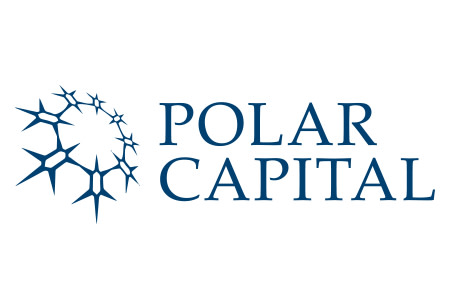The trust is backed by a well-resourced team with plenty of experience in the technology sector.
The managers invest in companies they believe can benefit from some of the biggest technology trends globally and over the last few years the trust has pivoted to be largely focused on the Artificial Intelligence (AI) theme.
Their focus on high-quality companies has delivered impressive long-term returns, although past performance is not a guide to the future.
How it fits in a portfolio
The Polar Capital Technology Trust aims to grow investors’ money over time by investing in next generation technology leaders, which the managers believe have great long-term potential. The managers invest in technology companies around the world, including in the higher-risk emerging markets.
Investing in a single sector like technology is a higher-risk approach compared to a more diversified one. We think funds and investment trusts investing in a specific sector should usually only form a small part of a well-diversified investment portfolio.
Investors in closed-ended funds should be aware the trust can trade at a discount or premium to the net asset value (NAV).
Manager
Ben Rogoff has been a technology specialist for 30 years and became lead manager on the technology trust in 2006. Over this time, he’s helped build the technology team to eleven members and it’s one of the largest technology investment teams in Europe.
Rogoff is also supported by Alastair Unwin, who joined Polar Capital’s technology team in 2019. Unwin has worked closely with Rogoff since he joined, and these efforts were formally recognised through a promotion to deputy manager in 2023. Unwin continues to provide support with stock selection, idea generation and challenge.
Rogoff and Unwin can also call upon the experience of their technology team for further support. Each member of the team has an area of expertise but have vast knowledge across the technology sector. The managers sit down with each analyst once a month to discuss their ideas and hold weekly team meetings to examine market trends, portfolio positioning and investment ideas.
Alongside the technology trust, Rogoff is also a manager of the open-ended Polar Capital Global Technology and Polar Capital Artificial Intelligence funds. We are comfortable he has the time and resources to manage his commitments to both the investment trust and funds effectively.
Process
The avoidance of early-stage or blue-sky companies is a key part of the managers’ process. They don’t want the added risk and uncertainty from these businesses, so instead focus on companies they deem of highest quality.
They want to invest in companies that are in strong financial positions, and which are run by experienced management teams. Each company must also have the potential to benefit from a technology trend or growth theme.
In addition, all companies are subjected to an “AI lens”. The managers believe that AI is the next general purpose technology, meaning that it will change the way companies work and everything else will revolve around it. As part of the research process, analysts must consider how each and every stock is impacted by AI.
Over the last few years the team have become increasingly excited about the opportunities that generative AI offers and over 90% of the portfolio is now focused on this theme. AI is a broad category and encompasses companies that enable AI technology (such as those making semiconductor chips or providing cloud computing services), AI beneficiaries (mainly technology companies) and AI adopters.
Typically, turnover in the trust is low, which means buying and selling is kept to a minimum. But, given the transformative potential of AI and recent share price volatility in the market, the managers have made a number of changes to the portfolio. They’ve reduced investments in software companies and shifted focus towards companies that provide the hardware and power necessary for AI to function. This has led them to invest in some non-traditional technology companies, like Rolls-Royce.
While the so called magnificent seven (Alphabet, Amazon, Apple, Meta, Microsoft, Nvidia and Tesla) make up around a third of the portfolio, this is much less than their weighting in the trust’s benchmark. The managers think that AI disruption could challenge the market positions of some of these larger companies and have therefore reduced their positions in Alphabet and Apple, though they are still some of the trust’s biggest holdings.
Given the nature of how the managers view the sector, they may invest in some of the higher-risk small and medium-sized companies, as well as companies in more volatile emerging economies. These positions could add risk. They also have the flexibility to use gearing (borrowing to invest) and derivatives which can magnify any gains or losses and increases risk. At the end of the trust’s financial year gearing was 2% of its net asset value.
Culture
Polar Capital was founded in 2001 and prides itself on its collegiate culture. Each manager and investment team is afforded autonomy, allowing them to develop and apply their own investment process and philosophy.
Polar Capital also promotes a strong focus on shareholders' interests and ensures they align with those of fund managers. The managers see themselves as part owners of the trust and they may receive a bonus that can be deferred into shares of the trust over 3 years. This helps make sure the trust is run in a way that benefits all shareholders.
ESG Integration
Polar Capital’s investment teams are given the flexibility to integrate environmental, social and governance (ESG) considerations in a way that best fits their investment approach. The company also provides a range of centralised resources to help underpin the quality of ESG analysis across the firm, including third party ESG research and data. Fund managers frequently engage with the companies they invest in on a range of issues, including ESG-related issues like board make-up and remuneration criteria.
The fund managers themselves are responsible for proxy voting, and a summary of the firm’s overall voting activity can be found on Polar Capital’s website.
ESG issues have become increasingly prominent in recent years, and the Polar Capital Global Technology trust team believe technology companies have the potential to help alleviate some of these problems in the years to come. While the investment process is not driven by ESG factors, the managers focus on engaging with companies they invest in to help improve corporate behaviour and exclude those they feel are the worst offenders.
All Polar Capital funds and investment trusts exclude companies linked to the production or marketing of controversial weapons such as cluster munitions and antipersonnel mines.
Cost
The ongoing annual charge over the trust’s financial year to 30 April 2025 reduced slightly to 0.77% compared to 0.80% the previous year. A performance fee was not levied over the past financial year and following a review the trust has decided to remove the performance fee effective from May 2025. Investors should refer to the latest annual report and accounts and Key Investor Information for details of the risks and charging structure.
If held in a SIPP or ISA the HL account charge of 0.45% (capped at £200 p.a. for a SIPP and £45 for an ISA) per annum also applies. Our account charge doesn't apply if held in a Fund and Share Account or a Junior ISA. As investment trusts trade like shares, both a buy and sell instruction will be subject to our share dealing charges within any HL account except online deals in a Junior ISA.
Performance
The trust has outperformed its benchmark significantly since it launched in 1996 and is slightly ahead since Rogoff took control of the trust in May 2006*. Remember past performance is not a guide to the future. Investments can go down as well as up in value, so you could get back less than you invest.
Over the trust’s most recent financial year (to the end of April 2025), it underperformed its benchmark. During this time, the trust’s NAV rose 3.1% and its share price fell 1.2%. A widening of the discount the trust traded on over the period explains why the share price return lagged the NAV return. To put this in perspective, the average discount over the last 10 years (to 11/11/25) was 6.6%.
The benchmark proved tough to beat as large tech companies outperformed their smaller peers. The trust held more medium-sized companies, and less larger ones, than the benchmark over this period, which was a drag on performance. While Apple delivered positive returns, having a smaller holding compared to the benchmark was a big detractor from the trust’s performance.
The tech sector saw plenty of ups and downs during this period, largely driven by the news of Chinese AI company DeepSeek’s potentially low-cost AI model. This led to a selloff in US tech companies. Although they quickly recovered as it was revealed that the impact wouldn’t be as severe as initially feared. Uncertainty around Trump’s tariffs also added to the challenges for the sector.
Recent performance has been much better, and the trust has rebounded strongly since the end of its financial year. Over the past 6 months, it’s gained 58.31% compared with 22.60% for the AIC technology sector average and is ahead of its benchmark. Investors should note that this is a very short time period to consider performance over and volatility is expected to continue going forward. As the trust is heavily focused on AI, any setbacks for this technology could have a negative impact on performance.
Annual percentage growth
Oct 20 – Oct 21 | Oct 21 – Oct 22 | Oct 22 – Oct 23 | Oct 23 – Oct 24 | Oct 24 – Oct 25 | |
|---|---|---|---|---|---|
Polar Capital Technology Trust plc | 20.00% | -24.66% | 13.25% | 44.76% | 53.46% |
AIC Investment Trust – Technology & Technology Innovation | N/A% | N/A% | 1.90% | 20.97% | 21.12% |


